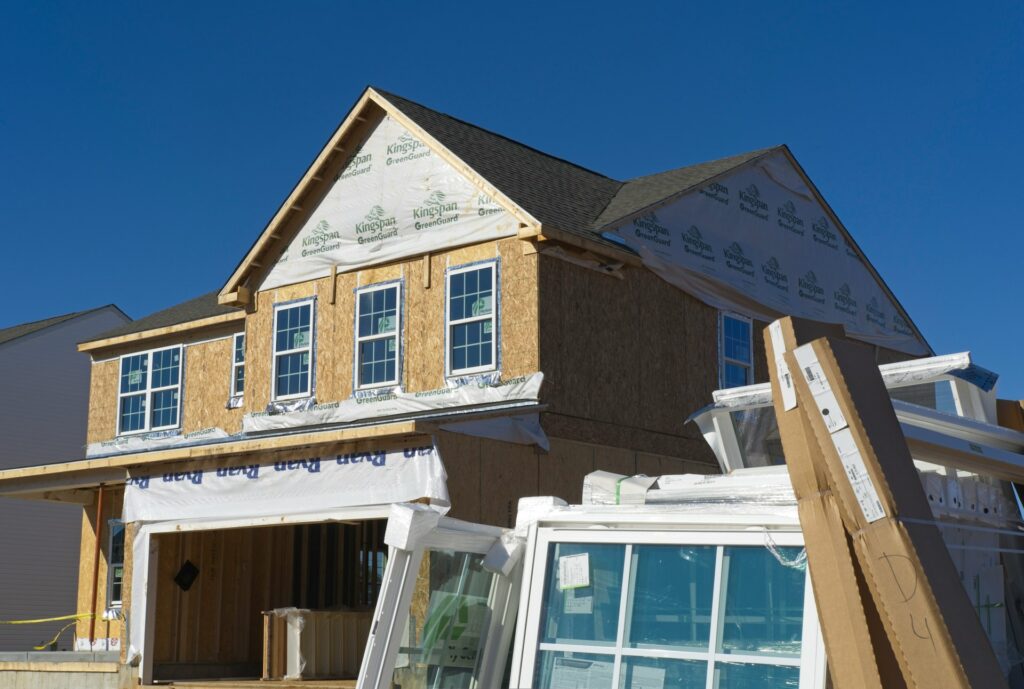Avoiding Regrets When Choosing a Contractor
Renovating your home can be both exciting and nerve-wracking. It’s a chance to transform your living space into something truly special, while also juggling budget concerns, deadlines, and design decisions. In this journey, selecting the right contractor is one of your most important moves. A skilled, trustworthy partner can bring your vision to life smoothly. The wrong choice can cause project delays and financial headaches.
Below, we’ll explore the five most common mistakes homeowners make when choosing a contractor. By identifying these pitfalls, you’ll streamline your next renovation and maximize your investment. This clarity can help you more confidently hire and collaborate with the right professional, ultimately leading to a safer and more fulfilling home transformation.
Mistake 1 Not Confirming Licenses and Credentials
Many homeowners assume all contractors are equally qualified. The truth can be more complicated. Various regions require special licenses or certifications in fields such as general contracting, plumbing, and electrical work. If you skip verifying these credentials, you may hire someone unprepared to handle your home’s complexities.
Credentials act as a measure of accountability and demonstrate that the person you hire has met specific standards for safety and skill. Licensed contractors typically keep up with local building codes and adhere to industry regulations. Unlicensed or under-credentialed workers risk overlooking crucial structural components that can lead to unexpected costs or safety hazards.
- Check local regulations: Look up your state or city’s licensing requirements. Construction codes and licensing can vary significantly. If you’ve recently moved to a new area, it’s especially important to understand the nuances.
- Ask for proof: It’s okay to request a copy of a valid license. A prepared contractor should be ready to share documentation and help you feel at ease.
- Explore certifications: Some contractors may also possess specialized trade certifications or professional memberships. For instance, membership in groups like the National Association of Home Builders (NAHB) can showcase a commitment to ongoing education and updated building practices.
Local governments often have searchable databases online so you can verify a contractor’s license. You might also find helpful resources on reputable sites, including your state’s consumer protection agency or your local city council website. Confirming these details adds an extra layer of security and assurance.
Mistake 2 Overlooking Insurance and Bonding
Whether you’re adding a new room or modernizing your kitchen, there’s always potential for mishaps. This is why insurance and surety bonding are critical. Some homeowners assume insurance belongs only to them, forgetting that a reputable contractor needs proper coverage. Hiring someone to work without it can leave you financially exposed if something goes wrong.
Insurance typically encompasses two important types:
- Liability Insurance
This covers property damage or injuries that happen during the project. For example, if a worker accidentally punctures a water pipe and floods your living room, liability insurance helps cover repair expenses. - Workers’ Compensation
This protects you from legal or medical claims related to accidents on the job site. If a contractor’s employee is injured while operating a power tool, workers’ compensation provides coverage, safeguarding you from unexpected bills.
Bonding, meanwhile, guarantees that a portion of the project’s cost would be repaid to you if the contractor doesn’t fulfill the terms of the contract. A bonded contractor often pulls a bond that covers project completion or promises compliance with local laws and permitting requirements.
- Ask for proof of insurance: A contractor should provide a certificate of insurance specifying coverage limits and effective dates.
- Verify the policy: Contact the insurer to ensure insurance is current and appropriate for construction projects.
- Confirm bonding details: In some areas, you can check bonding status through local building authorities or state licensing boards.
Overlooking insurance and bonding might save a few steps at first, but it is rarely worth the gamble. Taking a moment to verify these details up front can protect you from major financial and legal consequences later.
Mistake 3 Neglecting to Request References and Reviews
Hiring a contractor often hinges on trust. However, trust without verification is risky. Asking for references is a simple way to gain insight into a contractor’s past performance. It also helps you assess how well they communicate, meet deadlines, and respect budgets.
- Talk to previous clients: Learn how well the contractor managed timelines, how they handled surprises mid-project, and whether they stayed on budget. A phone chat or quick email exchange with one or two past clients can reveal a lot about the contractor’s approach.
- Examine completed projects: If feasible, observe a previous project in person or look at photos of finished work. This allows you to see the contractor’s quality of craftsmanship and attention to detail.
- Explore online reviews: Platforms like the Better Business Bureau (BBB) (https://www.bbb.org/), HomeAdvisor (https://www.homeadvisor.com/), or Angi (formerly Angie’s List) often host genuine reviews and ratings. Keep in mind you might see both positive and negative feedback—focus on patterns rather than one-off posts.
When discussing references, listen for how smoothly a contractor transitioned between tasks and how easily they adapted to curveballs, such as last-minute design changes. A contractor who consistently maintains open communication and embraces solutions helps make projects far less stressful.
References and reviews aren’t just about reading nice comments. They’re about painting a complete picture of the contractor’s work ethic, reliability, and responsiveness. Failing to gather these insights can leave you in the dark about potential concerns.
Mistake 4 Skipping a Detailed Written Contract
When excitement for the final results takes over, it can be tempting to rely on verbal agreements or informal emails. This can lead to misunderstandings about project layout, timelines, or costs. Relying on verbal arrangements alone leaves the door open for disagreements—and can make it difficult to hold anyone accountable.
A watertight written contract offers clarity and structure. It can minimize abrupt surprises, encourage healthy communication, and reinforce trust. Although contracts vary, here are a few core elements to include:
- Scope of work: Define the exact tasks involved. Specify which materials will be used, who will purchase them, and how the project will be completed.
- Timeline: Outline key milestones, including a planned start and end date. If relevant, include intermediate deadlines for specific portions, like electrical work or tiling.
- Payment terms: Include the total project cost, payment schedule (for instance, an initial deposit, followed by progress-based payments), and accepted payment methods. It’s common for contractors to ask for a down payment, but be wary if required deposits or upfront fees seem unusually high.
- Change orders: Establish how changes will be handled if you decide to tweak something mid-project. An official process for approving adjustments helps avoid confusion.
- Dispute resolution: Outline steps to resolve situations where disagreements surface. This may involve mediation or arbitration, ensuring conflicts don’t spiral out of control.
A comprehensive contract streamlines the entire renovation. It ensures everyone shares the same expectations and responsibilities, setting the stage for a more predictable, stress-free project.
Mistake 5 Basing Your Choice on Price Alone
Price is a major factor for any home improvement, but it shouldn’t be your only focus. Looking solely for the cheapest bid may lead you to cut corners—potentially costing you double later in repairs or updates. Meanwhile, the highest bid isn’t always a guarantee of premium craftsmanship.
It’s helpful to consider how each contractor balances quality, experience, and cost. Look at the numbers in the context of:
- Materials: A contractor might propose a slightly higher bid but use top-quality materials. This can benefit long-term value and reduce future maintenance.
- Experience: A less expensive contractor might be newer to the business. This is not necessarily a deal-breaker, but you’ll want reassurance they can handle the scope of your project.
- Timeline: Some experienced contractors charge more, but they can complete the project faster. This can save you money on living adjustments or downtime you’d otherwise incur during construction.
- Subcontractors: If the contractor partners with specific subcontractors—electricians, plumbers, or HVAC specialists—ask about their credentials. Less expensive overall bids might be using less experienced or uninsured subcontractors.
Remember that each home renovation is unique. If you’re building a new addition, the contractor’s ability to handle everything from drywall to wiring to plumbing can be critical. If you have a more straightforward update, you might be flexible on certain materials and tailor your budget accordingly.
Comparing multiple bids holistically is a smart step. Observe how each contractor calculates costs—transparency usually indicates professionalism. Also, pay attention to the type of communication you receive. If someone is difficult to reach during pre-project discussions, this may foreshadow future delays.
Putting It All Together
Homeowners who skip the above steps can run headlong into setbacks—such as unfinished work, safety issues, or unexpected budget explosions. When you align yourself with a reliable contractor, however, you’re far more likely to see timely, skilled results that match your vision.
By thoroughly examining credentials, confirming insurance, reviewing references, signing a clear contract, and fairly comparing price with value, you can:
- Ease stress and avoid misunderstandings.
- Safeguard your budget and protect against costly do-overs.
- Build trust that leads to a more harmonious renovation.
- Enjoy a smoother, more rewarding overall experience.
Each renovation project has the potential to feel like a joyful, organic transformation of your space. When your contractor truly embodies both expertise and accountability, you’ll feel that sense of flow—a seamless movement from idea to reality. In this state, communication is crisp, decisions come naturally, and any minor surprises are quickly resolved.
Embracing Collaborative Momentum
Renovations often involve a dynamic interplay between you, your contractor, and other specialists. Changes might arise halfway through a project—perhaps you discover a hidden plumbing issue or have a new vision for how you want your bathroom tiles arranged. In these moments, having a contract that outlines change orders and a contractor adept at real-time adaptation keeps everything on track.
You’ll also notice the difference when a contractor fully respects your ideas. A great working relationship fosters organic growth in your vision, where designs can iterate gracefully. When misunderstandings are minimized, home transformations evolve more naturally, creating a finished product that truly reflects your personal style.
Maintaining Continuous Oversight and Communication
Even after you’ve researched, hired, and begun the project, keep the lines of communication warm and open. Regular check-ins on progress, budget, and potential snags ensure you and your contractor stay in sync. Weekly or bi-weekly updates help you track details and feel involved without micromanaging.
A room addition or landscaping overhaul can span several months, so clarity in communication nurtures trust across the timeline. If conflicts arise, address them calmly. Constructive solutions flow more easily when you have a record of clear expectations and mutual respect.
Real-World Example Success in Bathroom Remodeling
Consider a homeowner named Ava who wanted to turn her outdated bathroom into a modern oasis. She interviewed three contractors and carefully checked licenses, insurance coverage, and online reviews. Besides comparing quotes, she also pushed for a detailed contract. She included a clause for any unforeseen plumbing repairs once the old fixtures were removed.
About a week into demolition, the contractor discovered an old, corroded pipe behind the shower wall. Because Ava’s contract specifically addressed hidden issues, she and the contractor simply documented a formal change order. They agreed on who would pay for the new pipe and how it would affect the project’s schedule. Ava didn’t have to scramble or worry about unforeseen costs. Ultimately, the remodel concluded slightly ahead of schedule, and the contractor’s honesty strengthened Ava’s confidence.
This example highlights how being proactive and confirming the right details from the start saves time, headache, and money. By investing a little extra effort in the vetting process, homeowners can adapt smoothly—even when renovation surprises arise.
Trust Your Instincts and Make an Informed Choice
At times, choosing a contractor involves weighing intangible factors as well, such as rapport, communication style, and trust. You might encounter contractors who look great on paper but don’t quite align with your approach. Or you might find a less flashy contractor who speaks directly and provides transparent explanations. The decision often comes down to discovering an intuitive fit between the homeowner’s vision and the contractor’s expertise and personality.
By avoiding the five common mistakes—failing to check credentials, overlooking insurance, skipping references, neglecting a detailed contract, and focusing solely on price—you’ll be well on your way to selecting a reliable professional. This approach can dramatically reduce anxiety and help you feel more meaningfully involved in the process.
A Confident Path Forward
Renovations don’t have to be chaotic or uncertain. With a clear perspective, you can find a home contractor who shares your vision and respects your budget and timeline. This is the foundation of a fruitful partnership, one that turns your dream project into a tangible, rewarding reality.
Embrace the importance of research and verification. Invest energy in open communication, and take comfort in having a thorough contract. Approach decision-making with a sense of calm assurance—this level of preparedness can transform a stressful prospect into an exciting journey of self-expression and home design.
When you do choose the right contractor, you’ll feel it. Your renovation will move forward with a sense of harmony, and you’ll notice clearer milestones, fewer unexpected detours, and more delightful moments watching your space take shape.
Staying informed as a homeowner ultimately gives you the power to shape your environment in ways that can shift your daily life—an inspiring reminder of just how impactful a single home improvement project can be.




